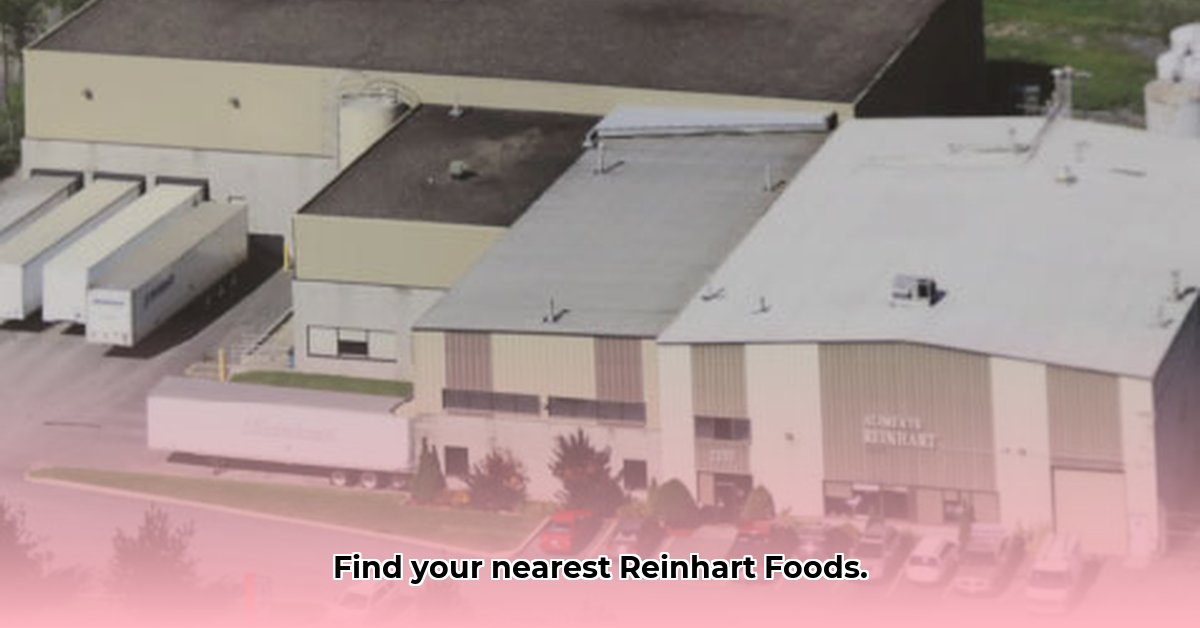
Reinhart Foods' Strategic Network Across Canada
Finding the precise locations of all Reinhart Foods facilities might seem like a complex task, but understanding their strategic distribution network is key to appreciating their success. This guide offers a comprehensive overview of their Canadian operations, highlighting key regions and explaining the rationale behind their geographic choices. While a fully detailed map is currently under development, this article provides valuable insights into Reinhart's significant presence across the country.
Key Operational Areas: A Nationwide Reach
Reinhart Foods' successful operations are rooted in its strategic placement of facilities across Canada. Several key regions stand out as critical hubs in their distribution network. These locations weren't chosen arbitrarily; they represent a carefully considered plan to optimize supply chain efficiency and minimize costs.
Ontario: A central location, Ontario serves as a vital hub for production and distribution. Its large population and robust transportation infrastructure make it an ideal base, likely housing numerous facilities producing a wide range of products, from vinegars to other specialty food items. This strategic placement reduces transportation costs and ensures quick product delivery across a significant portion of the market.
Quebec: Reinhart Foods' presence in Quebec is equally important, likely driven by its large local market and convenient access to both Canadian and US markets. Its proximity to the border facilitates efficient cross-border distribution, highlighting the company's commitment to reaching a wider customer base.
British Columbia: This western location is likely crucial for serving customers in western Canada. It also provides proximity to potentially valuable resources and serves as a strategic point for expanding into US West Coast markets.
These key regions, along with others across the country (detailed mapping currently in progress), underscore Reinhart's commitment to serving the Canadian market efficiently and effectively. They represent the interconnected nodes of a highly efficient distribution network.
Beyond Location: The Reinhart Advantage
Reinhart Foods' strategic location choices are not solely focussed on proximity to customers. They also reflect a commitment to efficient logistics and access to resources, contributing to their reputation for high-quality products. Their dedication to quality control, evident in their various certifications (specific certifications are currently being verified for inclusion in a future update), further reinforces their commitment to delivering exceptional products to consumers nationwide. This commitment to quality, combined with strategic logistics, allows them to maintain efficient operations while serving a large and geographically diverse market.
Future Updates and Mapping Efforts
This article is a work in progress; a detailed map of all Reinhart Foods facilities is actively under development. We are committed to providing a fully comprehensive, up-to-date visual representation of their nationwide network. Check back for updates as we refine our map and add to the information presented here. Our aim is to offer a clear and thorough picture of Reinhart's Canadian footprint.
Replicating Reinhart's Success: A Strategic Approach
Reinhart Foods' success in the Canadian food production industry serves as a case study in strategic planning and operational efficiency. Their model, however, presents significant challenges for smaller companies seeking to replicate their achievements.
Strategic Location Analysis: A Foundational Step
Reinhart's success depends heavily on strategically located facilities. Replicating this requires a rigorous analysis of potential locations, considering several factors.
- Market Proximity: Prioritize locations close to major population centers to minimize transportation costs and ensure product freshness.
- Transportation Access: Easy access to major transportation routes (highways, railways) is crucial for cost-effective distribution.
- Infrastructure Availability: Ensure adequate infrastructure (power, water, storage) is available at the chosen location.
Technology Integration: Leveraging ERP Systems
Reinhart's utilization of enterprise resource planning (ERP) systems such as Sage X3 provides a key competitive advantage. These systems streamline operations, enhance inventory management, and improve order fulfillment. Implementing a robust ERP system is crucial for gaining similar efficiency. This advanced technology allows for proactive adjustments to meet market demands and reduce waste through accurate forecasting and production planning.
Navigating Canadian Market Complexities
The Canadian grocery market presents distinctive challenges, requiring a deep understanding of consumer preferences and regulatory compliance. Transparency and accuracy of information are key to success.
Building a Resilient Supply Chain
Creating a strong supply chain requires attention to several crucial aspects:
- Supplier Relationships: Cultivate strong relationships with reliable food suppliers to ensure consistent high-quality ingredients.
- Traceability Systems: Implement robust traceability systems that allow clear tracking of products from origin to consumer.
- Sustainable Practices: Prioritize sustainable production and distribution practices to address growing environmental concerns and consumer expectations.
While Reinhart's model offers valuable lessons, it's essential to acknowledge the considerable investment required to replicate its large-scale operations. Smaller companies should focus on leveraging technology, building strong relationships, and optimizing their chosen niche within the Canadian market. Success requires a well-defined, targeted strategy that aligns with available resources and market opportunities.